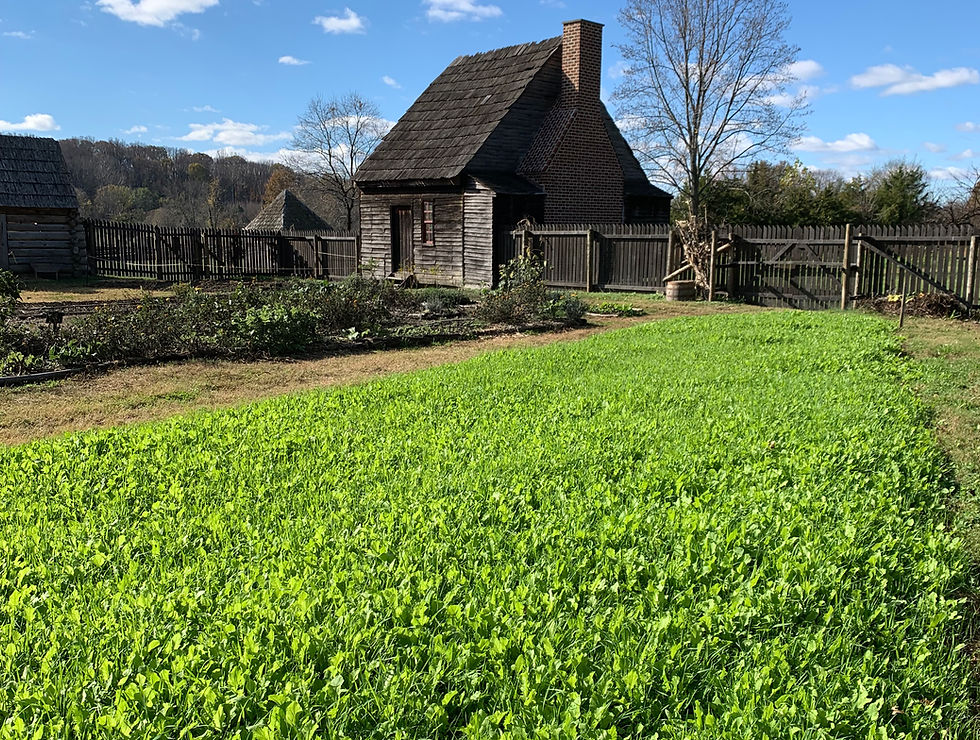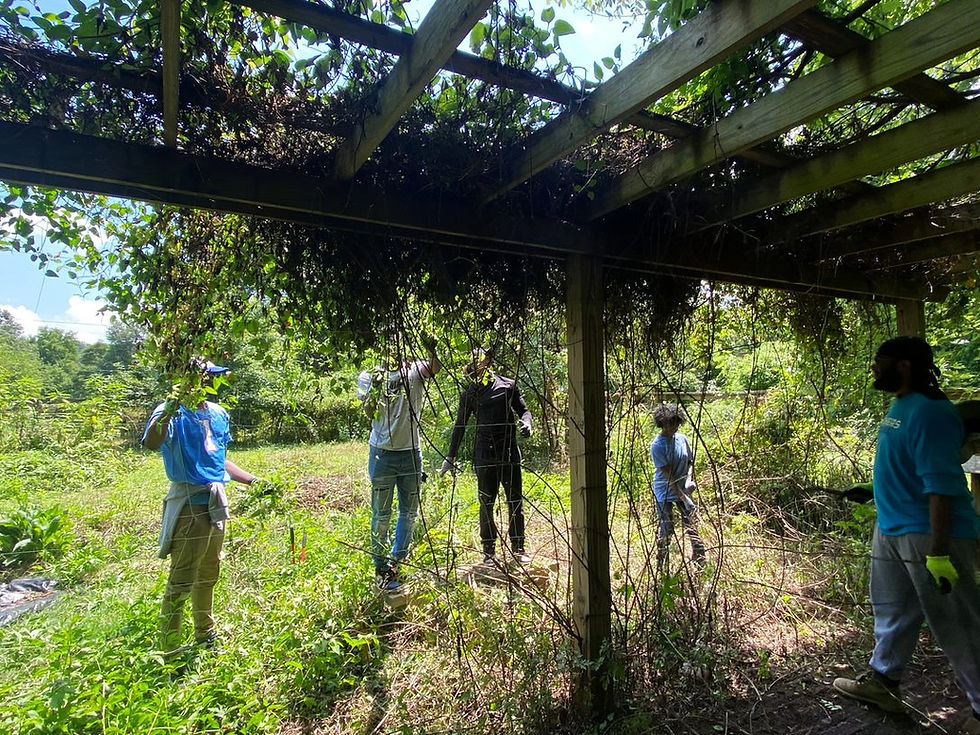Field Notes: Volume 16, Number 9
- Accokeek Foundation

- Jul 1, 2011
- 3 min read

This Week’s Harvest
Scallions
Onions
Green Sweet Bell Peppers
Beets
Basil
Summer Squash
Cucumbers
Tomatoes
While we strive for consistency at the Ecosystem Farm, we ask that our SHAREholders please keep in mind that Friday and Tuesday harvests will not always be the same.
For your convenience, an exact harvest list will be posted in the packing shed.
As the summer rolls along, the staff at the Ecosystem Farm has found themselves missing spring rains. Our soil is still moist, but we haven’t had a half-inch of rainfall in more than a month. The conservation of water, therefore, has become even more important. Here, that means mulching our fields and putting down drip tape, a water-efficient low-pressure irrigation system that uses long stretches of flat plastic hose to transport water down rows of crops. Preferable to overhead watering, drip tape can direct water to just where it needs to be, which means that we can use less of this scarce resource.
The mulch that helps our soil retain moisture can also help us elsewhere: it is our hope that thick layers of straw will deter the blister beetle, spotted this week in the greenhouse, from our field-grown crops. Chard seems to be a favorite food of the black defoliators, who are capable of secreting a caustic chemical that can blister the skin of would-be predators. Mulch will do nothing, however, to deter the crows that have taken a liking to the tomatoes growing in the New Field. Neither, we’ve found, will beach balls, which we hung among the plants last week. Our next plan? Devising a moveable scarecrow, and continuing to harvest the tomatoes a bit earlier than the crows would prefer them. Enjoy these fruits of our labor with the recipe we’ve included below, for tomato, onion, and cucumber salad.
Up Close With Cucumbers
The cucumber is a member of the gourd family (Cucurbitaceae), with a reputation as a cool thirst-quencher. Indeed, 96 percent of the cucumber is water. Food historian Waverley Root described the vegetable as “as close to neutrality as a vegetable can get without ceasing to exist.” Even so, it makes a delicious summertime snack. According to Rebecca Rupp in her book Blue Corn and Square Tomatoes, “early caravans took them along as a sort of vegetable water bottle; overheated Greeks mashed them and mixed the pulp with honey and snow to make an ancient version of sherbet.”
Various cucumber cultivars are available today, including the Lemon, which looks just like its name suggests, and the blimp-shaped Zeppelen. Cucumbers are often eaten raw or pickled, but can also be pureed into a cold soup or a salad dressing.
Below, photos from this week on the Ecosystem Farm. Click images to enlarge, or view them on Flickr.
This Week’s Recipe: Tomato, Onion, and Cucumber Salad
Recipe from FoodNetwork.com
Ingredients:
5 medium tomatoes, halved lengthwise, seeded and thinly sliced
1/4 onion, peeled, halved lengthwise, and thinly sliced
1 cucumber, halved lengthwise and thinly sliced
Generous drizzle of extra-virgin olive oil (about 2 tablespoons)
2 splashes red wine vinegar
Coarse salt and black pepper, to taste
Directions:
Dress the tomatoes, onions, and cucumber with olive oil, red wine vinegar, salt, and pepper. Let stand about 20 minutes. Re-toss and serve (goes well with crusty bread).
Upcoming Events
Local Food Forum: Tuesday, July 5, 2011 (Recurring, First Tuesdays), 6:30 to 8 p.m., Education Center: The Local Food Forum is a monthly meeting of producers and consumers interested in local food. Join us to discuss locally-grown fruits, vegetables, eggs, and meat—from where to find them to how to make them more available. For more information, and to receive updates about the Local Food Forum, please email caes (a) accokeek (dot) org.







